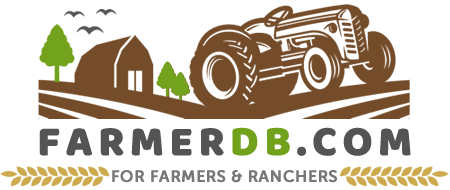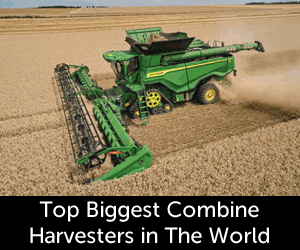Forage is the foundation of livestock nutrition, providing essential fiber, energy, and protein to support growth, milk production, and overall animal health.
The quality and type of forage used in feeding programs significantly impact livestock performance, digestion, and farm efficiency. Different forage types serve various purposes, ranging from daily grazing to preserved feed for off-seasons, ensuring year-round nutritional support.
Forage is divided into several main categories based on plant type and usage.
Refer to the table below for a detailed classification.
| Type | Primary Use | Season | Common Examples |
|---|---|---|---|
| Grasses | Grazing, Hay, Silage | ✿ Cool-Season & ☀ Warm-Season | Timothy, Ryegrass, Bermuda, Orchard, Fescue, Bromegrass, Bahia, Sudan Grass, Wheatgrass, Tall Fescue |
| Legumes | High-protein Grazing, Hay, Silage | ✿ Cool-Season & ☀ Warm-Season | Alfalfa, Red Clover, White Clover, Birdsfoot Trefoil, Lespedeza, Cowpea, Peanut, Soybean, Lentils, Vetch |
| Browse | Supplementary Browsing for Goats & Sheep | ❤ Year-Round | Willow, Mulberry, Acacia, Blackberry, Mesquite, Poplar, Alder, Aspen, Elm, Honey Locust, Black Locust |
| Herbage | Grazing, Fresh Feed Mix | ✿ Cool-Season & ☀ Warm-Season | Alfalfa, Clover, Chicory, Dandelion, Turnip greens, Plantain, Brassicas, Mustard Greens, Beet Tops, Radish Greens |
| Forbs | Limited Grazing, Mixed Forage | ✿ Cool-Season & ☀ Warm-Season | Sunflower, Wild Mustard, Cowpea, Brassicas, Chicory, Thistle, Yarrow, Dandelion, Pigweed, Amaranth |
| Forage Crops | Planted for Grazing, Silage, Green Chop | ✿ Cool-Season & ☀ Warm-Season | Corn, Sorghum, Alfalfa, Oats, Barley, Rye, Millet, Triticale, Wheat, Sugarcane |
| Aftermath | Secondary Grazing after Harvest | ✿ Cool-Season & ☀ Warm-Season | Regrown Ryegrass, Timothy, Clover, Sorghum, Fescue, Alfalfa, Bromegrass, Oats, Bermuda, Barley |
| Residue | Low-Quality Grazing & Winter Feed | ✿ Cool-Season & ☀ Warm-Season | Corn Stalks, Wheat Straw, Barley Residue, Oat Residue, Soybean Stubble, Rice Straw, Peanut Hay, Sorghum Residue, Millet Residue, Sunflower Residue |
| Green Chop | Fed Immediately (High Moisture) | ✿ Cool-Season & ☀ Warm-Season | Fresh-cut Alfalfa, Ryegrass, Corn, Timothy, Clover, Sorghum, Millet, Sudan Grass, Orchard Grass, Fescue |
| Silage | Stored & Fermented for Winter | ❤ Year-Round (Stored) | Corn Silage, Alfalfa Silage, Sorghum Silage, Ryegrass Silage, Barley Silage, Oat Silage, Clover Silage, Wheat Silage, Triticale Silage, Millet Silage |
| Hay | Stored for Feeding | ❤ Year-Round (Stored) | Alfalfa Hay, Timothy Hay, Bermuda Hay, Orchard Hay, Clover Hay, Fescue Hay, Ryegrass Hay, Bromegrass Hay, Prairie Hay, Mixed Grass Hay |
| Haylage | Winter Feeding | ❤ Year-Round (Stored) | Alfalfa Haylage, Clover Haylage, Ryegrass Haylage, Orchard Grass Haylage, Timothy Haylage, Sorghum Haylage, Sudan Grass Haylage, Bromegrass Haylage, Fescue Haylage, Oat Haylage |
| Fodder | Whole-Plant Feed | ❤ Year-Round (Stored) | Corn Fodder, Sorghum Fodder, Millet Fodder, Sunflower Fodder, Sugarcane Fodder, Barley Fodder, Wheat Fodder, Rye Fodder, Oat Fodder, Pea Fodder |
Contents
Grasses
Grasses, belonging to the Poaceae family, are a fundamental component of livestock feed, serving as a primary forage source in grazing systems, hay production, and silage.
Their high adaptability to various climates and soil conditions ensures a consistent and reliable feed supply for ruminants and other herbivorous animals.
As a forage type, grasses provide essential nutrients, fiber, and energy, supporting efficient digestion, rumen function, and overall livestock health.
Their growth patterns allow for continuous grazing or periodic harvesting, making them a cost-effective option for livestock feeding.
Whether used in pastures, hayfields, or silage storage, grasses remain a versatile and sustainable feed source, ensuring optimal animal performance and productivity.
Nutritionally, grasses provide:
- Crude Protein (CP): Typically ranges from 8% to 20%, depending on species, maturity, and growing conditions. Young, leafy grasses have higher protein content.
- Fiber (Neutral Detergent Fiber – NDF): Around 50% to 70%.
- Energy (Total Digestible Nutrients – TDN): Varies from 50% to 65%.
Proper management, such as rotational grazing and timely harvesting, enhances the nutritional quality of grasses, ensuring optimal livestock performance and productivity.
Legumes
Legumes, belonging to the Fabaceae family, are a vital component of livestock feed, valued for their high protein content, superior digestibility, and nutrient density.
With their broad leaves and high nutritional value, legumes provide high-quality grazing, hay, and silage. When mixed with grasses, they help create a balanced diet for livestock, improving feed efficiency and rumen function.
Nutritionally, legumes offer:
- Crude Protein (CP): Typically ranges from 15% to 25%, significantly higher than most grasses.
- Fiber (Neutral Detergent Fiber – NDF): Around 30% to 50%, lower than grasses.
- Energy (Total Digestible Nutrients – TDN): Varies from 60% to 70%.
- Minerals: High in calcium, magnesium, and potassium.
Due to their higher nutritional value, legumes should be carefully managed in livestock diets to prevent issues such as bloating in ruminants. Proper grazing management and strategic mixing with grasses help optimize their benefits while minimizing risks.
Browse
Browse, consisting of the leaves, twigs, and young shoots of shrubs and trees, is an important livestock feed source, especially in regions where grasses and legumes are scarce due to seasonal changes or environmental conditions. Unlike herbaceous forages, browse provides woody forage that is often richer in minerals and beneficial plant compounds, enhancing livestock nutrition and diet diversity.
Many browse species are naturally drought-resistant, remaining nutritious and palatable even in dry seasons, making them a reliable feed source in arid and semi-arid regions. Goats and sheep are particularly efficient at utilizing browse, while cattle and other ruminants can benefit from it as a valuable supplemental feed to improve nutrient intake and feeding efficiency.
Nutritional Value of Browse:
- Crude Protein (CP): Ranges from 10% to 25%, often higher than grasses but varies by species and season.
- Fiber (Neutral Detergent Fiber – NDF): Typically 30% to 60%, with higher fiber content in mature leaves and stems.
- Energy (Total Digestible Nutrients – TDN): Around 50% to 65%, similar to grasses but influenced by lignin content.
- Secondary Compounds: Some browse plants contain tannins and polyphenols.
Herbage
Herbage consists of edible herbaceous plants that provide valuable forage for livestock, serving as an important component of natural and cultivated pastures.
These non-woody plants offer a diverse range of nutrients. Unlike grasses and legumes, herbage includes forbs, broadleaf plants, and other palatable species that grazing animals readily consume.
Livestock such as cattle, sheep, goats, and horses graze on herbage alongside grasses and legumes, naturally balancing their diet and improving nutrient intake.
Nutritional Value of Herbage:
- Crude Protein (CP): Typically 10% to 20%, depending on species and growth stage.
- Fiber (Neutral Detergent Fiber – NDF): Around 30% to 55%.
- Energy (Total Digestible Nutrients – TDN): Varies from 50% to 70%, depending on plant maturity.
- Minerals: Often high in calcium, magnesium, and iron.
- Vitamins: Good sources of vitamin A, C, and E.
Herbage is particularly beneficial in diverse pasture systems, where it enhances dietary variety, improves forage intake, and reduces nutrient deficiencies.
However, some herbaceous plants may contain anti-nutritional factors, requiring careful pasture management to avoid toxicity risks.
Forbs
Forbs are broadleaf, herbaceous (non-woody) plants that provide valuable forage for livestock. Unlike grasses and legumes, forbs include a wide variety of wild and cultivated plants.
Forbs grow naturally in pastures, rangelands, and meadows, often thriving in areas where grasses struggle due to soil conditions or climate.
Some forbs, such as clovers and chicory, are intentionally cultivated for their nutritional benefits, while others grow as native vegetation and serve as a valuable forage resource for grazing animals.
Nutritional Value of Forbs:
- Crude Protein (CP): Typically ranges from 10% to 25%, depending on species, growth stage, and season.
- Fiber (Neutral Detergent Fiber – NDF): Around 25% to 50%, with lower fiber content making them more digestible than many grasses.
- Energy (Total Digestible Nutrients – TDN): Generally 55% to 70%.
- Secondary Compounds: Some forbs contain tannins, flavonoids, and essential oils.
Forage Crops
Forage crops are cultivated plants grown specifically for livestock feeding, providing a reliable and nutritious food source in the form of grazing, hay, silage, or green chop. These crops are intentionally planted to supplement natural pasture, ensuring consistent feed availability throughout different seasons.
Forage crops can be classified into different categories based on their growth cycle, plant type, and usage.
The main types include:
- Grasses (Poaceae family): Examples include corn, sorghum, and ryegrass.
- Legumes (Fabaceae family): Alfalfa and clovers are common choices, providing high protein and enriching soil with nitrogen.
- Forbs: Certain broadleaf herbaceous plants, such as chicory.
- Root Crops: Turnips and sugar beets are sometimes grown as forage.
Nutritional Value of Forage Crops:
- Crude Protein (CP): Ranges from 8% to 25%.
- Fiber (Neutral Detergent Fiber – NDF): Generally 40% to 70%, essential for maintaining rumen function.
- Energy (Total Digestible Nutrients – TDN): Varies from 50% to 75%, depending on crop maturity and species.
Aftermath
Aftermath refers to the regrowth of forage plants after the initial harvest or grazing. This secondary growth occurs in grasses, legumes, and other forage crops, providing an additional feed source for livestock later in the growing season. Aftermath grazing is a common practice in pasture and hayfield management, allowing farmers to maximize forage production and extend grazing periods without replanting.
Well-managed aftermath can provide nutrient-rich, palatable forage while reducing reliance on stored feed during late summer or autumn.
Nutritional Value of Aftermath Forage:
- Crude Protein (CP): Generally 8% to 18%, depending on plant species and regrowth conditions.
- Fiber (Neutral Detergent Fiber – NDF): Ranges from 40% to 65%, with more digestible fiber in younger regrowth.
- Energy (Total Digestible Nutrients – TDN): Around 50% to 65%, depending on maturity and weather conditions.
Residue
Residue refers to the remaining plant material left in the field after harvesting grain, forage, or other crops. This includes stems, leaves, husks, and other plant parts.
Common examples of residue used for feeding include corn stover, wheat straw, rice straw, and soybean residue. These materials are often utilized in winter grazing systems, as supplemental roughage, or incorporated into total mixed rations (TMR) for ruminants.
Nutritional Value of Crop Residue:
- Crude Protein (CP): Typically 3% to 8%, lower than fresh forages but can be supplemented with protein sources.
- Fiber (Neutral Detergent Fiber – NDF): Ranges from 60% to 80%.
- Energy (Total Digestible Nutrients – TDN): Around 40% to 55%, with variability based on crop type and weathering.
- Digestibility: Generally low to moderate, but can be improved through treatments such as ammoniation or supplementation with more digestible feeds.
Green Chop
Green chop, also known as soilage, refers to freshly cut forage that is harvested daily and fed directly to livestock without drying or processing.
This method is commonly used in intensive dairy and beef cattle operations, as well as for sheep and goats, to provide a high-moisture, nutrient-rich feed source while minimizing grazing pressure on pastures.
Green chop can be made from grasses, legumes, cereal crops (such as corn and sorghum), and other forage plants, depending on availability and seasonal conditions.
Since it is fed in its fresh state, it retains high palatability and nutritional value, making it a preferred option for improving feed efficiency and livestock performance.
Nutritional Value of Green Chop:
- Crude Protein (CP): Typically 10% to 25%, depending on plant species and maturity at harvest.
- Fiber (Neutral Detergent Fiber – NDF): Around 40% to 60%.
- Energy (Total Digestible Nutrients – TDN): Generally 55% to 70%.
- Moisture Content: 70% to 85%, requiring proper feeding management to prevent spoilage.
Silage
Silage is a fermented, high-moisture forage that is stored and preserved in an anaerobic (oxygen-free) environment to provide livestock with a nutritious and consistent feed source throughout the year.
It is widely used in dairy, beef, and sheep farming due to its high energy, digestibility, and long-term storage capabilities.
Silage is typically made from grasses (ryegrass, fescue), legumes (alfalfa, clover), and cereal crops (corn, sorghum, barley), which are chopped, compacted, and stored in silos, pits, or plastic-wrapped bales.
Nutritional Value of Silage:
- Crude Protein (CP): Varies from 8% to 22%, depending on the forage type.
- Fiber (Neutral Detergent Fiber – NDF): Typically 35% to 60%.
- Energy (Total Digestible Nutrients – TDN): Around 55% to 75%.
- Moisture Content: 50% to 70%, requiring proper storage to prevent spoilage.
Hay
Hay is dried forage that is harvested and stored for livestock feeding, providing a long-term, nutrient-rich feed source when fresh pasture is unavailable.
Hay is made from grasses (timothy, fescue, bermudagrass), legumes (alfalfa, clover), or mixed forages that are cut, dried to reduce moisture, and stored in bales, stacks, or loose piles.
Nutritional Value of Hay:
- Crude Protein (CP): Typically 8% to 22%, with legume hay (alfalfa, clover) being higher in protein than grass hay.
- Fiber (Neutral Detergent Fiber – NDF): Around 40% to 70%.
- Energy (Total Digestible Nutrients – TDN): Generally 45% to 65%, depending on forage type and maturity.
- Moisture Content: 10% to 15%, ensuring proper preservation and preventing spoilage.
Haylage
Haylage is partially fermented forage that is made by cutting, wilting, and ensiling grass or legume forage at a higher moisture content than dry hay but lower than silage. It undergoes a mild fermentation process in sealed bales or silos, preserving its nutrients and palatability while reducing the risk of spoilage.
This forage is commonly made from ryegrass, fescue, alfalfa, clover, or mixed forages, offering higher protein and digestibility than dry hay while avoiding the high acidity of silage. Proper ensiling ensures anaerobic conditions, allowing beneficial bacteria to produce enough lactic acid to preserve the forage.
Nutritional Value of Haylage:
- Crude Protein (CP): Typically 12% to 20%, higher than most hay but slightly lower than silage.
- Fiber (Neutral Detergent Fiber – NDF): Around 40% to 60%.
- Energy (Total Digestible Nutrients – TDN): Generally 55% to 70%, depending on the forage type and maturity.
- Moisture Content: 40% to 60%, higher than hay but lower than silage, making it less prone to dust and mold issues.
Fodder
Fodder refers to any cultivated or processed feed given directly to livestock, including grains, legumes, hay, silage, and fresh-cut forage. Unlike pasture grazing, where animals feed themselves, fodder is manually harvested, processed, and provided in a controlled feeding system.
Fodder can be classified into different types based on its form and processing:
- Dry Fodder: Includes hay and straw.
- Green Fodder: Fresh-cut grasses, legumes, and forage crops like alfalfa, clover, and maize.
- Silage & Haylage: Fermented fodder.
- Sprouted Fodder (Hydroponic Fodder): Grains like barley, wheat, and corn.
- Concentrates: Grains (corn, wheat, oats) and protein-rich feeds (soybean meal, cottonseed meal).
Do you have any experience with the topic discussed here?
Would you like to improve the information shared and contribute your practical knowledge on the subject?
Your real-world experience as a farmer or rancher could greatly benefit other members, and the community would deeply appreciate your contribution.


